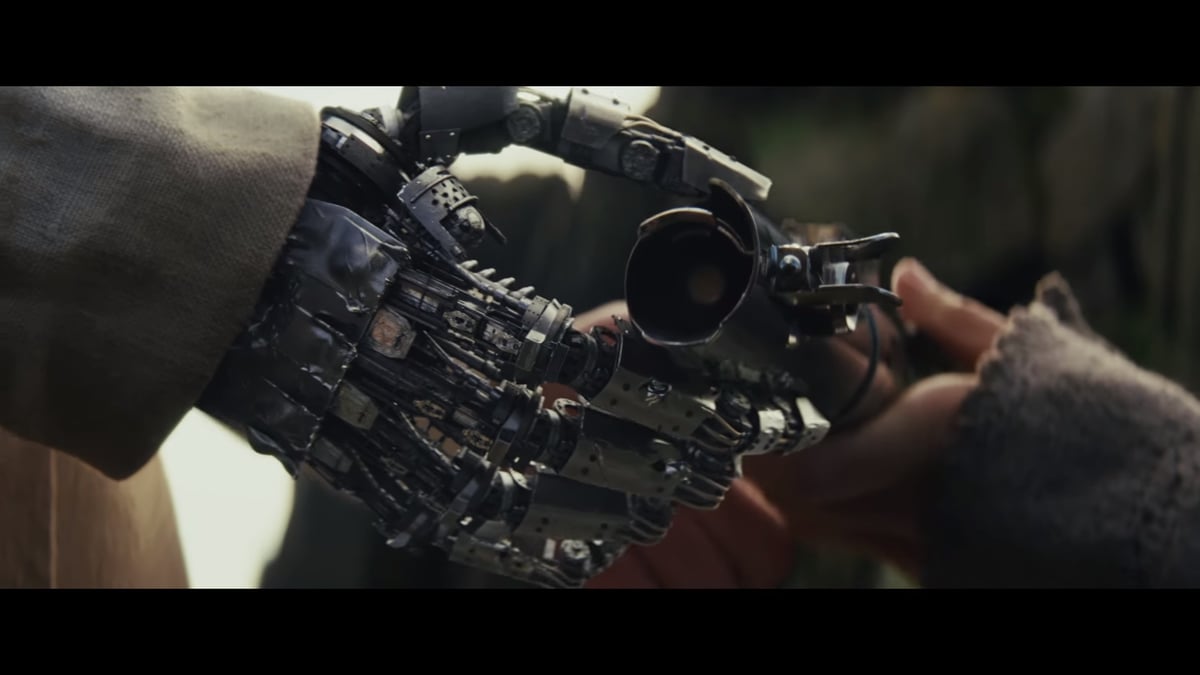Researchers at Georgia Tech use ultrasound to extend the technology behind prosthetic hands and deliver the results to an amputee musician.
The new Star Wars film, The Last Jedi, is out! The timing couldn’t be any better for musician Jason Barnes to test the latest in 3D printed prosthetic technology.
Because it wasn’t already moving enough to see Luke receive his original lightsaber with the bionic hand that replaced the one he lost at the same time!!

Thanks to researchers at the Georgia Institute of Technology, this hand is closer than ever to the Jedi’s iconic extremity. That’s because, unlike other prosthetic hands, this one is able to detect the desired movements for individual fingers.
Dr. Gil Weinberg, the professor leading the project, explains:
“Traditional EMG-based prosthetics only sense whether there’s electrical activity, whether there’s a spike. Ultrasound, on the other hand, can actually sense the direction of the movement of the muscle, and therefore can get much more subtle information from the muscle that relates to the finger-by-finger control.”
Barnes’ previous prosthetic hand is an example of a traditional EMG-based prosthesis. It executes only a single motion, like pinching or gripping, depending on whether or not the forearm muscles are flexed.
“EMG sensors aren’t very accurate,” says Weinberg. “They can detect a muscle movement, but the signal is too noisy to infer which finger the person wants to move.”
The Future of 3D Printed Prosthetic Hands
The prosthesis behind the magic is the Ada hand, from Open Bionics. It’s a fully 3D printable robotic hand with an open source design.
It consists of several pieces printed in two different materials. Most are made in PLA, but the palm, in order to bend and grip, is printed in Ninjaflex, a flexible TPU material.
Weinberg’s team at Georgia Tech aren’t the only ones to benefit from the start-up’s efforts. They’ve already helped a number of amputees and recently entered into the second clinical trial with the National Health Service (NHS). Taking part in the trial are 15 children and young people around the UK.
Joel Gibbard, CEO of Open Bionics, reflects on the inspiration for his work:
“It’s so awesome seeing the reactions from people wearing it for the first time and trying it out for the first time… Seeing the satisfaction on their face when they get it to move is really really cool.”
Don’t Miss: Open Bionics Samantha Payne Helps Disabled Kids Become Superheroes
Founded in 2013, the start-up has already received several awards, including Start-Up Of The Year at the British Engineering Excellence Awards. They even have a Guinness World Record for the first prosthetic limb based on a video game!
Source: Georgia Institute of Technology
License: The text of "Amputee Musician Tests Luke Skywalker Hand" by All3DP is licensed under a Creative Commons Attribution 4.0 International License.